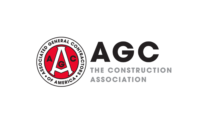“An education isn’t how much you have committed to memory, or even how much you know. It’s being able to differentiate between what you do know and what you don’t.” — Anatole France
“Too often we give children answers to remember rather than problems to solve.” — Roger Lewin
“The eye sees only what the mind is prepared to comprehend.” —Henri Bergson
“Invest a few moments in thinking. It will pay good interest.” —Anonymous
In my opinion, critical thinking is an art and is simply defined as “the ability to analyze and evaluate an issue to form a judgment.” Hopefully correctly. Critical thinking should not be confused with people who are critical.
How critical thinking applies to construction is quite simple when considering Bergson’s quote.
If project managers, project supervisors or safety managers don’t have or are not taught critical thinking skills, they may not have the ability to see, analyze or evaluate the problem when it occurs. (For example, a metal stud contractor that started work four months late due to a delay in concrete completion.) We would all agree that a four-month delay is easy to see. However, we may not all agree how a four-month delay might impact us now or in the future unless we analyze and evaluate the issue correctly.
Analyzing the Problem
To analyze and evaluate the problem, we would need more information. For example, a person with good critical thinking skills would ask the following questions to form a judgment:
- Will we have the same amount of time to complete our work?
- Will we have less time to complete our work?
- Will the schedule be extended four months?
- Will overtime be required?
- Will work be done in a different sequence?
- Will multiple trades be in our way?
Once we know the answers to these questions, we can then make a judgment, which may or may not include additional costs. The problem in this case is that the manager on this job didn’t ask the questions because he didn’t comprehend what he was seeing and hearing.
A far more subtle example costing millions each year is because companies don’t comprehend what they’re seeing and hearing. They see that they’re not making enough money on change orders, that the supervision budget is upside down, and they hear there’s not enough supervision time in the budget.
However, they don’t take time to analyze the issue to form a judgment. In the case of change orders, one would have to ask this question to analyze the issue, “What all does a foreman do to integrate and complete a change order?” To answer the question, one would develop the following answers to the question: “What all does a foreman do to integrate and complete a change?”
1. Planning and Approval Phase
- Get written authorization to proceed.
- Time to review and understand change.
- Time to procure necessary or lacking information.
- Time to procure material, tools and equipment.
- Time to coordinate with others.
- Time to schedule the work.
2. Construction Phase
- Time to receive material, tools and equipment.
- Time to assist in layout.
- Time to procure labor multiple times.
- Time to oversee labor.
- Time to resolve conflicts.
- Time to schedule clean up.
- Time to attend inspections and make correction.
3. Accounting Phase
- Time to manage time cards-cost codes.
- Time to manage job cost.
- Time to manage EWA Tickets-Daily.
4. Closeout Phase
- Time to demobilize.
- Time to get signatures-approvals if on a work order.
- Time to return documentation to manager.
- Time to meet with the client in the event of a dispute.
The next obvious step for a critical thinker is to ask others if they think the assumptions made are true or false. Once the assumptions are determined true, it’s time to make a judgment.
Your judgment in this case is, “My foremen are spending much more time on change orders than I originally thought. I’m going to start charging the client the time it takes my foreman to do the things that apply to each change.” In other words, “I may charge the client for everything on the checklist, or for just those I think apply.”
Critical thinking is commonly a three-step process, which includes:
- Identify the issue/problem.
- Analyze by asking questions.
- Make a judgment-determination.
The most difficult of the three-step process is Step 1, because, “The eye sees only what the mind is prepared to comprehend.”
In other words, if a manager doesn’t have critical thinking skills, he or she won’t see the problem for what it is.
Teaching Critical Thinking
Can critical thinking skills be taught? Yes, but it’s difficult when a high percentage of people don’t see things as they really are. In other words, many people have learned to see things the way they want to see them.
Although I’m writing this article before the Super Bowl, a good critical thinking sports analogy is Richard Sherman, the Seattle Seahawks’ defensive cornerback. Like him or hate him, he reads plays better than most, and his stats support it. We can probably all agree that if he’s not the best corner in the NFL he’s one of the top three. Why? Because he sees the problems, understands them, finds solutions, and finds them in seconds.
Educators now understand how important it is to teach students how to think critically from an early age. According to the Centers for Disease and Control, the number one killer of adolescents is motor vehicle crashes. According to the center, the factors include:
- Teens are more likely than older drivers to underestimate dangerous situations or not be able to recognize hazardous situations.
- Teens are more likely than older drivers to speed and allow shorter headways (the distance from the front of one vehicle to the front of the next). The presence of male teenage passengers increases the likelihood of this risky driving behavior.
- Among male drivers between 15 and 20 years of age who were involved in fatal crashes in 2012, 37 percent were speeding at the time of the crash and 25 percent had been drinking.
- Compared with other age groups, teens have the lowest rate of seat belt use. In 2013, only 55 percent of high school students reported they always wear seat belts when riding with someone else.
- At all levels of blood alcohol concentration (BAC), the risk of involvement in a motor vehicle crash is greater for teens than for older drivers.
- In 2012, 23 percent of drivers aged 15 to 20 involved in fatal motor vehicle crashes were drinking.
- In a national survey conducted in 2013, 22 percent of teens reported that, within the previous month, they had ridden with a driver who had been drinking alcohol. Among students who drove, 10 percent reported having driven after drinking alcohol within the same one-month period.
- In 2012, 71 percent of drivers aged 15 to 20 that were killed in motor vehicle crash after drinking and driving were not wearing a seat belt.
- In 2012, 49 percent of teen deaths from motor vehicle crashes occurred between 3 p.m. and midnight and 53 percent occurred over the weekend.
From the research I’ve done, it appears that teaching kids critical thinking skills at the youngest possible age may save their lives and will likely improve their personal and professional success rates because critical thinking improves judgment.
A Critical Thinking Company
Keeping in mind that the steps in a critical thinking process commonly include:
- Identify the issue/problem.
- Analyze by asking questions.
- Make a judgment/determination.
Again, the most difficult step in the process is identifying the issue/problem. If the mind doesn’t comprehend what it’s seeing and hearing, (what’s happening/not happening or what will happen on a job) as in football, the play will be over before you respond.
An excellent and easy to implement way of improving an operations teams critical thinking skills is to develop a set of questions requiring yes or no answers. The following “yes” or “no” questions will help the team understand the critical thinking process and improve their overall critical thinking skills.
- Is your project following the originally planned schedule?
- Is your project following the originally planned sequence?
- Is your project following the originally planned manpower?
- Is your project following the original planned supervision budget?
When any of the above four questions are answered with a “no,” the leader of the group should ask why until the root cause of the problem is determined. Once the root cause is determined a judgment can then be made.
With that said, I want to leave you with a final quote. In my own words, “The time and money you invest in teaching critical thinking skills will result in a tenfold return.”






Report Abusive Comment